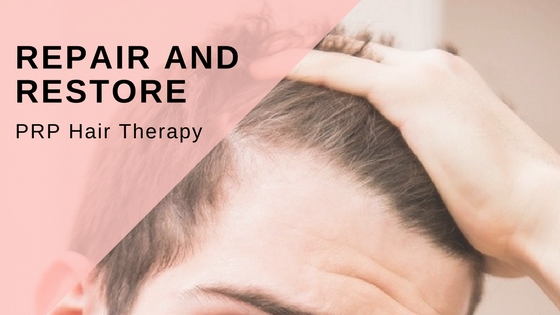Hair loss and hair thinning can be a result of several different causes. The first symptoms are thinning, loss of glow and cessation of growth. A number of people are coping with this issue, both men and women. Not even the younger generation are spared. Many solutions are present on the market, but only certain procedures are beneficial. The PRP hair restoration treatment is an all natural non-surgical solution, with no side effects.
What is PRP?
PRP stands for Platelet Rich Plasma, a great concentration of growth factors. It is derived from the blood, and then separated in order to remove red blood cells. At first, PRP was used to encourage healing response a.k.a. to stimulate healing of soft tissue. Several conditions may be treated. Aside from the usage in dentistry and orthopedics, PRP therapy has a significant place in dermatology, skin resurfacing and androgenic alopecia.
How does PRP hair restoration treatment work?
PRP therapy is a natural solution and non-surgical procedure. As mentioned before, first we need the compounds from your own blood. So, we will take a little blood (it’s like you’re having a routine blood testing), then use a centrifuge to separate the PRP and remove it form the rest of the blood. You’re guessing, only the enriched cells will remain. Furthermore, the microneedling device will be used in order to create micro-channels and, finally, the PRP will be infused into the scalp.
PRP contains a variety of growth factors that can be very effective for hair thinning or hair loss. For those who are searching for scientific facts, here’s the list of the most important growth factors and their effect to follicle growth.
- Platelet-Derived Growth Factor (PDGF)—promotes blood vessel growth and cell replication as well;
- Transforming Growth-Factor-Beta (TGF-b)—promotes growth of matrix between cells, bone metabolism;
- Vascular Endothelial Growth Factor (VEGF)—promotes blood vessel formation;
- Epidermal Growth Factor (EGF)—promotes cell growth and differentiation, then blood vessel formation and collagen production;
- Fibroblast Growth Factor-2 (FGF-2)—promotes growth of specialized cells and blood vessel formation
Who is the right candidate?
Good candidates for PRP hair restoration treatment are both men and women who are dealing with natural hair thinning or hair loss. However, remarkable results are achieved in those whose hair is starting to thin and still has active follicles.
A lot of evidence suggests that women may respond better to the PRP therapy. Also, patients with medical conditions such as cancer or suffering from blood infections should wait until the condition stabilizes.
When will I be able to see the results?
Hair growth improvements are visible in about three months. We suggest repeated treatments in order to maintain or enhance results.
[button style=”readmore” align=”center” href=”https://fcskinsolution.com/location/” title=”Call 604 877 1299 to book your appointment today!” target=”_self” icon=”4|fontawesome” icon_align=”right” icon_size=”” icon_style=”” icon_c=”” icon_bc=”” icon_bgc=”” icon_bgc_hover=”” size=”normal”]

0 Comments
Leave A Comment